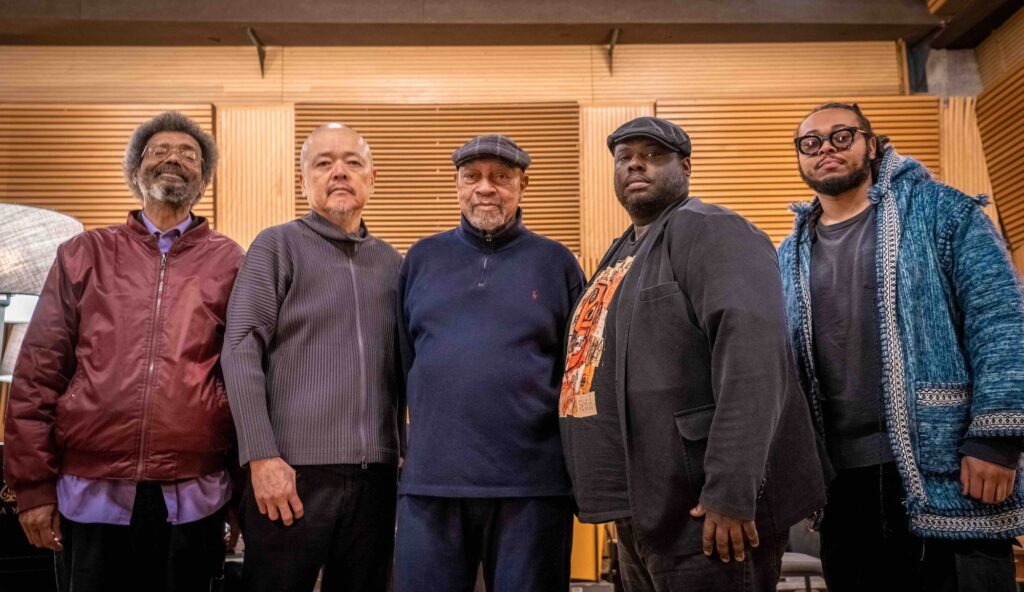Pianist Kenny Barron, at 81, Carries on Jazz Traditions Even as He Sets New Standards
We first heard of Barron through his work with such venerated masters as Dizzy Gillespie and Stan Getz; today, he leads a band of first-rate players all at least a generation younger.

Kenny Barron
‘Beyond This Place’
Artwork Records
Appearing at Smoke, August 22-25
The career of pianist Kenny Barron is a particularly outstanding example of how the jazz business is supposed to work: The best younger players start as sidemen to established bandleaders, and eventually attain master status on their own.
We first heard of Mr. Barron through his work in the bands of such venerated masters as Dizzy Gillespie, James Moody, Stan Getz, Yusef Lateef, and his big brother, Bill Barron, a brilliant tenor saxophonist. Just as Mr. Barron apprenticed with musicians a generation older than he, today he leads a band of first-rate players all at least a generation younger.
At 81, Mr. Barron is busier than ever — his trio set was a highlight of the 70th edition of the Newport Jazz Festival, and later this month he does a four-night, eight-show run at Smoke with an entirely different trio. He also has a new album.
Bassist Kiyoshi Kitagawa and drummer Johnathan Blake were present for the Newport set and the album, “Beyond This Place,” though the album adds two more players on most tracks. The festival’s artistic director and host, Christian McBride, made a point to tell attendees that his programming choices were heavily Philadelphia-centric.

Messrs. Barron and Blake are both from Philadelphia, as is Mr. McBride, but when Mr. McBride introduced Mr. Kitagawa, born at Osaka in 1958, he addressed him with the line, and I quote, “You bad anyway.”
The trio began with an exciting original, “New York Attitude,” which has the general feeling of an uptempo standard like “Just One of Those Things” or “You And The Night and the Music.” They followed with the quieter, more subdued “Night Fall,” by Charlie Haden, which featured an extended lyrical solo by Mr. Kitagawa. Like John Lewis in the generation before him and Aaron Diehl in the generation after, Mr. Barron has a keen interest in exploring the boundaries between jazz and classical music, and his solo here alluded at points to a baroque feeling.
This was followed by more boppish originals, “Magic Dance” and “Bud Light,” the latter in honor of the centennial of a modern jazz piano pioneer, Bud Powell. The trio climaxed with two Caribbean-styled pieces that reflected the sultry tropical mood that was engulfing Rhode Island on that hot afternoon, “Cook’s Bay” and “Calypso.”
The latter had its inspiration in Sonny Rollins’s many jazz calypsos, as well as “Jambo Caribe,” a lesser-known album from 1964 that features Mr. Barron on piano, playing jazz calypsos with Dizzy Gillespie. Even though Mr. Barron was playing a traditional acoustic piano, somehow he made it sound like a West Indies steelpan percussion. All present concurred that it was a superlative, albeit very sweaty, set, and a highlight of Newport 2024.
“Beyond This Place,” which also features vibraphonist Steve Nelson and alto saxophonist Immanuel Wilkins on many tracks, represents what we’ve come to expect, a combination of thoughtful originals and a few well-considered standards. One of the latter starts the album, as Mr. Barron prepares us for the entrance of Mr. Wilkins on Hoagy Carmichael’s “The Nearness of You.”
The two of them play it so slowly and deliberately, letting us hear each note, that it’s almost the instrumental equivalent of parlando, a kind of talk singing delivered on the saxophone.
This is followed by “Scratch,” which is just the opposite: At points there are boppish overtones, but there’s also the kind of postmodern vibe that we might hear in the playing of Geri Allen or Muhal Richard Abrams. Mr. Immanuel plays a solo in which he seems to be dancing the very edge of chaos and confusion. Mr. Barron mindfully punctuates it with only the odd chord here and there, as if to help him keep his balance.
Mr. Nelson then solos, and when Mr. Barron takes his turn at a solo, he brings out the interior logic that had seemed utterly absent until he started playing.
“Innocence” is a quiet, subdued, highly lyrical, and utterly symmetrical original, in which one phrase responds to another in a way that suggests a piece of music having a conversation with itself. There are two more standards, one from the world of show music, the other from the world of jazz.
“Softly As In a Morning Sunrise” is breathlessly fast and over way too soon at three minutes; somehow, an operetta aria has become as hard a slice of soul jazz — propelled by Mr. Blake’s powerful percussion — as I’ve ever heard. “We See” is a lesser-heard Monk composition in which Mr. Barron not only supports the other four players, but seems to be dancing all around them; it’s almost like listening to two interconnected performances transpiring in tandem.
This barely begins to describe everything Kenny Barron is capable of: Philadelphia-based music, classical music, Caribbean music — and all of it with a New York attitude.

